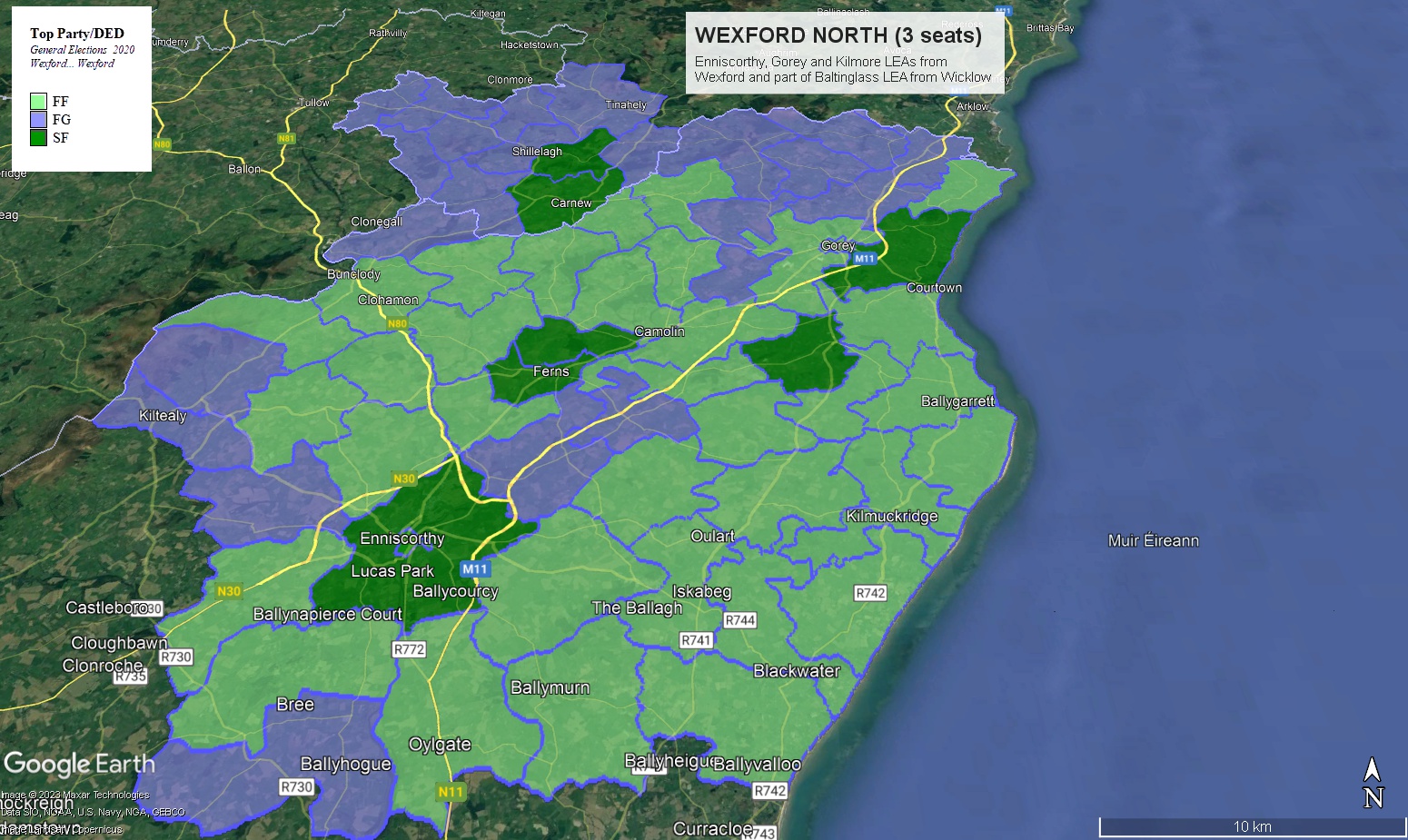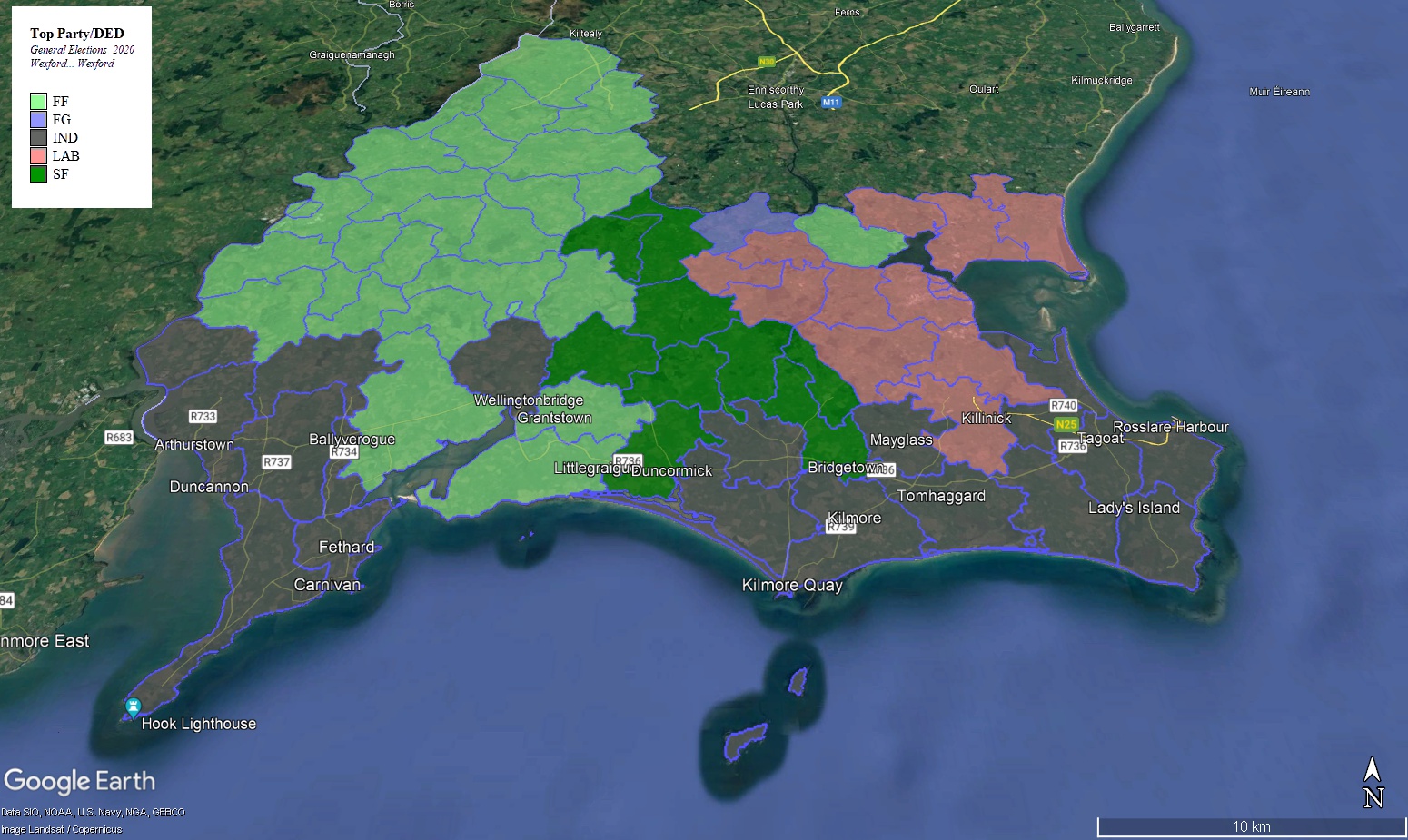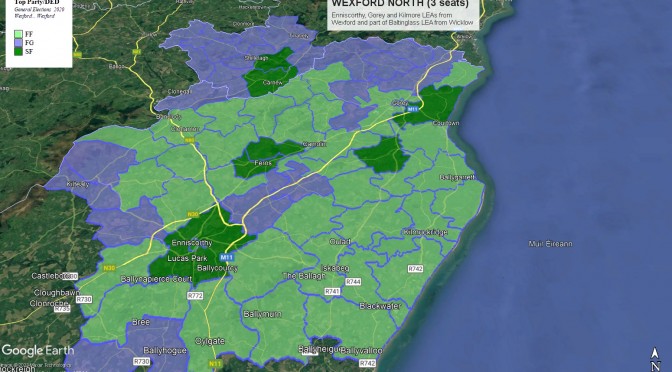In this post, I will be gradually working through the possible permutations of constituencies that the recently formed Electoral Commission might consider.
Unfortunately I’m slightly shooting blind, as the Terms of Reference merely state that “the total number of members of the Dáil, subject to Article 16.2.2° of the Constitution, shall be not less than 171 and not more than 181”. Apparently, the precise number of members the Dáil will not be set until after the Central Statistics Office releases the final population figures (sometime in the summer months) and will not be revealed until the Constituency Review report is released probably in the Autumn.
However, there seems to be a general concensus amongst people wiser than myself that the final number is likely to be somewhere between 176 and 181 in order to “future-proof” whatever scheme of constituencies is arrived at.
Accordingly, I have decided to ensure that my constituency examples below (examples – not proposals) would be within the permitted 5% variation from the National average of Population per TD for both 178 and 180 seat models.
Just to reiterate that these are examples of what the Electoral Commission MIGHT do, rather than what they WILL do – or indeed, what I think they SHOULD do.
VARIANCE
The below table shows the population limits (positive or negative) that for constituencies to be valid. Each constituency has to have a Population per TD ratio within 5% of the National Average.
TABLE 1 – PERMITTED VARIATIONS IN POPULATION FOR CONSTITUENCIES
| MAGNITUDE | 178 | 180 | ||
| Minimum | Maximum | Minimum | Maximum | |
| 3 seats | 82,034 | 90,669 | 81,123 | 89,662 |
| 4 seats | 109,379 | 120,892 | 108,164 | 119,549 |
| 5 seats | 136,724 | 151,116 | 135,204 | 149,436 |
TERMS OF REFERENCE
The Terms of Reference for the Electoral Commission are as follows.
- the total number of members of the Dáil, subject to Article 16.2.2° of the Constitution, shall be not less than 171 and not more than 181*;
- each constituency shall return 3, 4 or 5 members;
- the breaching of county boundaries shall be avoided as far as practicable.
- the reference to county boundaries shall be deemed not to include a reference to the boundary of a city or any boundary between any 2 of the counties of Dún Laoghaire-Rathdown, Fingal and South Dublin.
- each constituency shall be composed of contiguous areas;
- there shall be regard to geographic considerations including significant physical features and the extent of and the density of population in each constituency; and
- subject to the above matters, the Commission shall endeavour to maintain continuity in relation to the arrangement of constituencies.
The two important terms for me are Numbers 3 and 7, as logically interpreted it means that the integrity of county boundaries is prioritised over the continuity of current Constituency boundaries – including presumably those where county boundaries are breached.
As regards Number 2, I think it’s regrettable that larger constituencies are not permitted – besides allowing for a better share of representation, there is a reasonable case for their use in larger counties (ie Galway) or indeed in large cities (ie Dublin and Cork)
LEINSTER
I’m going to examine the Connaught and Ulster constituencies in three distinct groups :
- South-East Leinster (Wexford and Wicklow)
- South-West Leinster (Carlow, Kildare, Kilkenny, Laois and Offaly)
- North Leinster (Cavan, Longford, Louth, Meath, Monaghan and Westmeath)
Cavan-Monaghan is included in North Leinster as seven DEDs in Meath are currently part of the Cavan-Monaghan constituency
SOUTH-EAST LEINSTER
Firstly, the reasoning behind choosing to group these three counties.
The constituencies of Wexford and Wicklow together account for 11.08 seats worth of population (swp) in a 178 seat Dáil and 11.21 swp in a 180 seat Dail. In other words they are within the bounds of deviation for 11 seats between them.
How would these seats be apportioned? There are two possible options : Two four seaters and a seater, or a five seater and two three seaters.
I’m going to go with the second option as this would ensure greater continuity with existing arrangements. So which county should remain a five-seater (i.e. cede population to the other county)?
TABLE 2 – POPULATION BY COUNTY/CONSTITUENCY
| CONSTITUENCY/CTY | POPULATION | 178 SEATS | 180 SEATS |
| Wexford | 163,527 | 5.68 | 5.75 |
| Wicklow | 155,485 | 5.40 | 5.46 |
I’m going to opt for Wicklow as it has the smaller population of the two counties, and therefore needs to cede less to bring it within the bounds of variation for a five-seat constituency (around 6,000 population) in a 180 seat Dáil, compared to over 14,000 for Wexford.
An additional complication in the presence of a large town (Gorey) in North Wexford near the Wicklow border which makes a population move from Wexford to Wicklow more challenging.
WEXFORD NORTH (3 seats)
The constituency of Wexford North would include the three northern LEAs of Enniscorthy, Gorey and Kilmuckridge as well as the southernmost part of Baltinglass LEA in Wicklow. The main settlements in the Wicklow part of the constituency would be Carnew, Shillelagh and Tinahely which are all situated close to the Wexford border
TABLE 3 – WEXFORD NORTH CONSTITUENCY DEDS
| Constituency | DISTRICT ELECTORAL DIVISIONS | POPULATION |
| Wexford | ALL DEDs in Enniscorthy, Gorey and Kilmuckridge LEAs | 78,666 |
| Wicklow | The DEDs of Aghowle, Ballingate, Carnew, Coolattion, Coolboy, Cronelea, Killnure, Money, Rath, Shillelagh and Tinahely in BALTINGLASS LEA | 6,688 |
Wexford has been a constituency since the creation of the state in 1922, and for most of its existence its boundaries have been contiguous with those of the county. The two exceptions were between 1937 and 1948 when it included South Carlow, and then from 1961 to 1981 when Bunclody and surrounding areas went into Carlow-Kilkenny.
There is a potted political history of the constituency in the Wexford North section….
MAP 2 – PROPOSED WEXFORD NORTH CONSTITUENCY

Fianna Fáil topped the poll throughout much of the rural part of the constituency and in Gorey Town. Sinn Féin topped the poll in Enniscorthy, Carnew and Courtown.
TABLE 4 – PARTY SUPPORT BY LEA
| SF | FG | FF | LAB | GP | OTH | IND | % | |
| Enniscorthy | 30% | 24% | 29% | 6% | 2% | 4% | 6% | 36% |
| Gorey | 26% | 27% | 33% | 4% | 3% | 3% | 3% | 34% |
| Kilmuckridge | 24% | 23% | 31% | 9% | 3% | 4% | 7% | 23% |
| Baltinglass (pt.) | 29% | 36% | 19% | 2% | 3% | 5% | 4% | 7% |
| TOTAL | 27% | 25% | 30% | 6% | 2% | 3% | 5% |
Sinn Féin topped the poll in Enniscorthy; in fact they took 40% in the town.
Fine Gael topped the poll in the Wicklow portion of the constituency, but the Sinn Féin vote was surprisingly high for a mainly rural area.
On the above figures, the three seats would go to Fianna Fáil, Fine Gael and Sinn Féin.
WEXFORD SOUTH (3 seats)
The constituency of Wexford South would include the three southern LEAs of Kilmore, New Ross and Wexford. The main towns are New Ross on the Kilkenny border and Wexford on the eastern coast.
TABLE 3 – WEXFORD SOUTH CONSTITUENCY DEDS
| Constituency | DISTRICT ELECTORAL DIVISIONS | POPULATION |
| Wexford | ALL DEDs in Kilmore, New Ross and Wexford LEAs | 84,681 |
Much of the central area of the constituency consists of villages and rural so it is interesting that Sinn Féin topped the poll down the centre of the constituency.
MAP 2 – PROPOSED WEXFORD SOUTH CONSTITUENCY

Fianna Fáil polled best in its traditional stronghold of New Ross – if memory serves me correct they took 4 out of 5 seats there in the local elections in 1985. By contrast, Labour topped the poll in their traditional stronghold of Wexford in the east – in 2019 they took 2 out of 7 seats here with a vote of 34% and their third candidate chased the Sinn Fein candidate home for the last seat.
TABLE 4 – PARTY SUPPORT BY LEA
| SF | FG | FF | LAB | AON | OTH | IND | % | |
| Wexford | 27% | 10% | 14% | 32% | 2% | 5% | 9% | 35% |
| New Ross | 18% | 12% | 37% | 6% | 2% | 6% | 20% | 35% |
| Kilmore | 22% | 9% | 16% | 15% | 5% | 6% | 27% | 29% |
| TOTAL | 23% | 11% | 23% | 18% | 3% | 6% | 18% |
As can be seen the party vote in Wexford South would be sharply segregated – Fianna Fáil do disproportionately better in New Ross, while Labour do the same in Wexford.
On the above figures, the three seats would probably go to Fianna Fáil, Labour and Sinn Féin, but an Independent could challenge for the Fianna Fáil seat.
WICKLOW
Coming soon….
